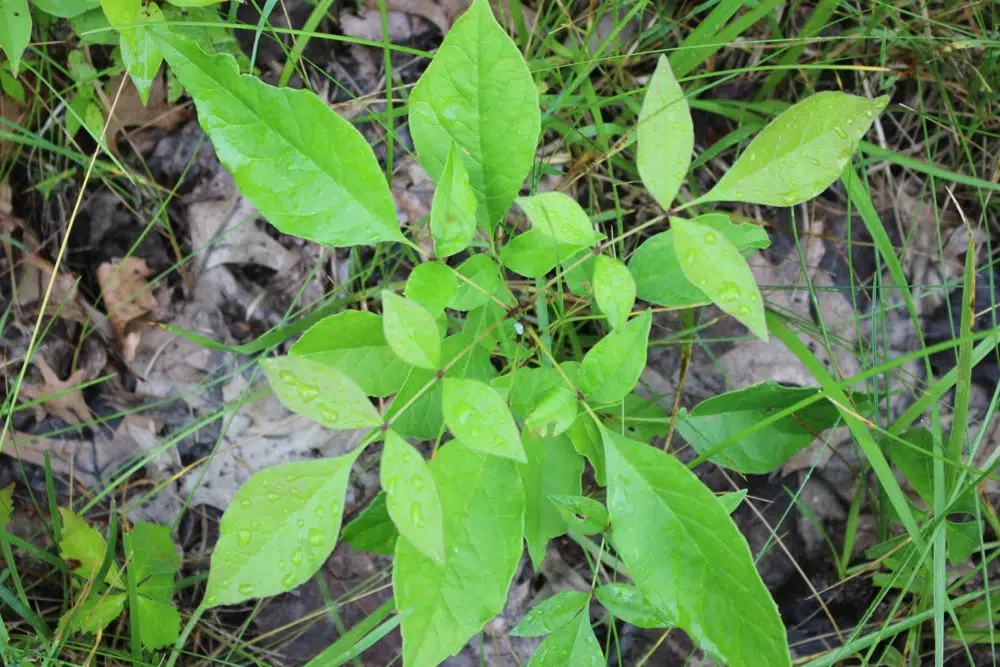Compacted Soil
Ash
Fraxinus spp.

White ash (F. americana) and green ash (F. pennsylvanica) are valuable trees grown for landscaping or harvested for lumber to make furniture, tool handles, and baseball bats. Black ash trees (F. nigra) are commonly used by Indigenous peoples for basket weaving.
Native range
White and green can be found across most of the eastern USA, from southern Canada down to northern Florida, and to the west reaching parts of Minnesota and Eastern Texas. Black ash does not reach further south than West Virginia. Other American ash species include blue ash (F. quadrangulata), pumpkin ash (F. velutina), Oregon ash (F. latifolia), Texas ash (F. albicans), California ash (F. dipetala), and Carolina ash (F. caroliniana) which we will not go into detail about here.
Ash habitat
A number of native ash species overlap in their deciduous forest habitat preferences. White ash are mostly found in upland forests, though they can be found in a number of different forest types. Green ash tend to be found in riparian forests. Black ash are usually found in wet woods and bogs.
Specs & lifecycle
Ash is a deciduous tree that can grow up to 70-80 ft (20-25 m) tall. In natural stands, ash live between 50-65 years, with cared-for trees living longer, such as a 106-year-old green ash and a 346-year-old white ash.
Ash in full light may start to bloom when they are 4 inches diameter at breast height (DBH), although complete canopy flowering usually happens when the tree is about 8 inches DBH. Ash trees are dioecious, meaning individual trees have either all male or all female flowers. Female flowers can self-fertilize, but male-female cross fertilization yields healthier offspring. Only trees that produce female flowers will yield seeds.
Threats to ash
Ash trees are susceptible to four different boring insects, as well as leaf and root fungi, and the ash seed weevil. The invasive emerald ash borer (Agrilus planipennis, EAB) beetle has devastated populations of N. American ash species and precipitated dramatic changes in North American forests. EAB is native to Asia and was accidentally introduced near Detroit, MI, possibly through contaminated wood pallets. EAB is a specialist beetle that feeds and reproduces on all Fraxinus species. Each time a female EAB mates, it can lay up to 60 eggs in ash tree bark crevices, then after hatching the larvae burrow under the bark into the phloem layer (which transports sugar, water, nutrients) of the tree. They continuously feed on the phloem, allowing the larvae to grow, which causes girdling of nutrient flow through the tree. The larvae transform into adults and chew their way out of the bark, leaving a D-shaped hole. In Ohio, forested ash stands had almost complete mortality within 6 years after initial EAB symptoms.
Management with restoration may improve forest community dynamics and a number of different options are possible (e.g., EAB-resistant ash trees, pesticides, biological control). The U.S. Forest Service is diligently working towards breeding EAB-resistant ash and the Holden Arboretum has assisted by caring for one of many progeny field test plantations.
How are EAB resistant ash found for breeding?
In locations where mature ash stands have been decimated, EAB persists at low numbers surviving on young trees. However, some “lingering ash” remain in these forests. The term <b>lingering ash</b> refers to healthy, mature ash trees that have survived for at least two years after the initial ash mortality rate reached 95% from EAB. Lingering ash can still be infested by the EAB but are dying at a slower rate. This suggests that lingering ash may have some degree of resistance to EAB and are candidates for resistance breeding programs.
Researchers test lingering ash clones for phenotypes that show resistance via EAB egg bioassays, where EAB eggs are attached and allowed to attack sapling clones, these bioassays have shown that at least one green ash selection was able to kill larvae like an EAB-resistant Asian ash host tree F. mandschurica. Confirming and breeding EAB resistance in ash is the first step towards restoration with ash hybrids or resistant individuals. The Great Lakes Basin Forest Health Collaborative, co-sponsored by Holden, is focused on supporting a network of partners in tree resistance-breeding activities for forest species that are threatened by invasive insects and diseases, starting with ash. <b>To report a potentially lingering ash, please email rkappler@holdenfg.org.</b>
To see where and when EAB had reached U.S. counties, and to learn more, visit www.emeraldashborer.info




